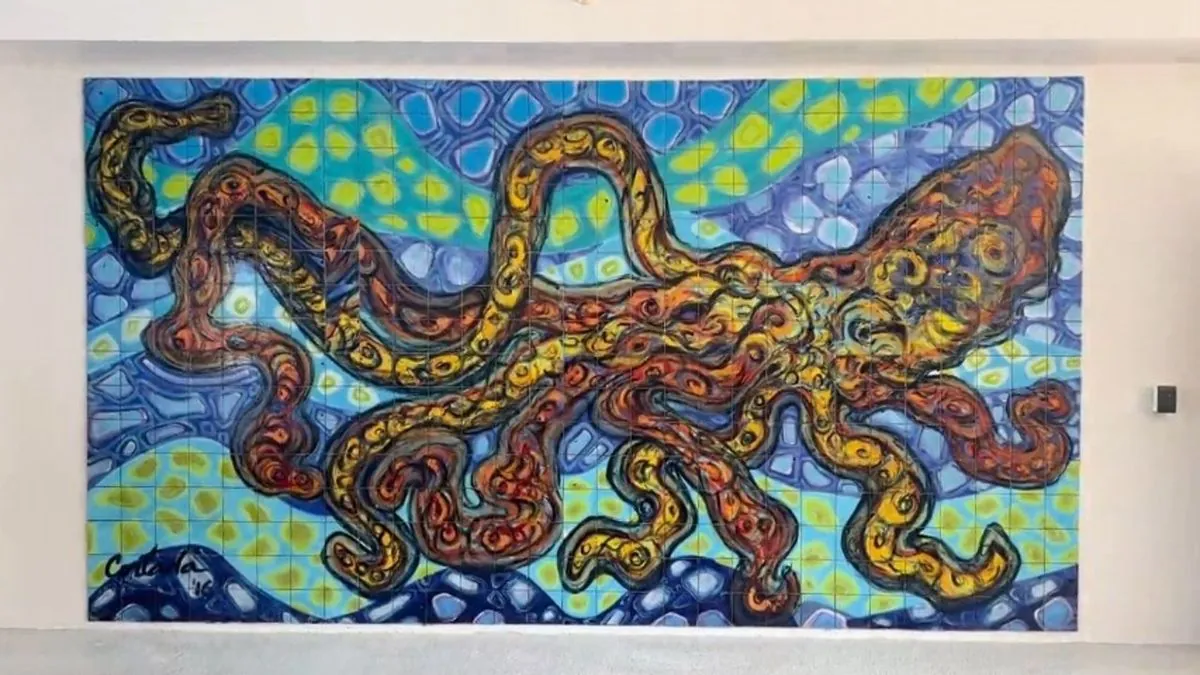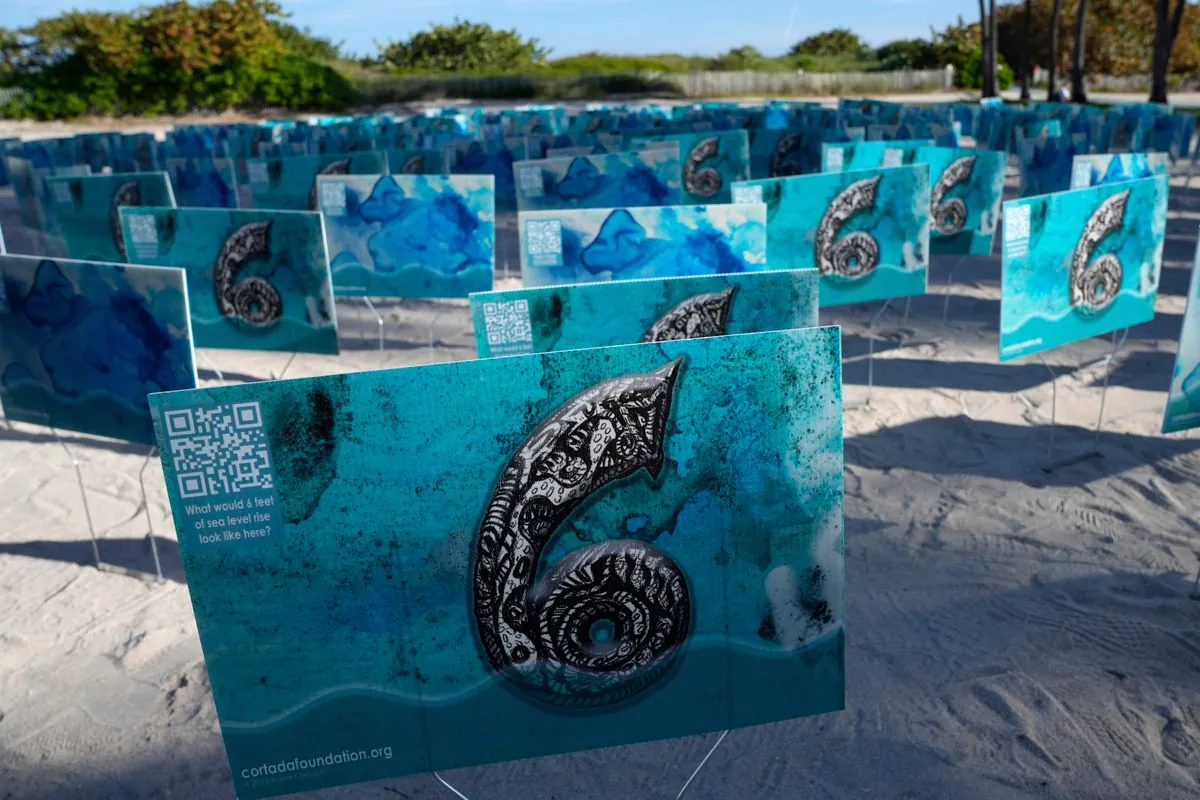Miami Artist's Climate Warning: Numbers Submerged in Innovative Exhibition
Xavier Cortada's "Climate Science Art" at the National Academy of Sciences uses numbers to visualize sea level rise. The exhibition combines paintings, sculptures, and installations inspired by polar expeditions.

Xavier Cortada, a Cuban-American artist from Miami, has created a thought-provoking exhibition that merges art with climate science. His "Climate Science Art" show, currently on display at the National Academy of Sciences, utilizes numbers from 1 to 20 to illustrate the potential impact of rising sea levels on his hometown.
Cortada's artistic journey began with expeditions to the Earth's poles. In 2006-2007, he visited Antarctica, followed by an Arctic voyage aboard a Russian icebreaker in 2008. These experiences inspired him to create artworks using melting ice and paint, some of which are featured in the current exhibition.
The centerpiece of Cortada's show is "The Underwater" project. This initiative involves placing numbered markers around Miami, with each digit representing the number of feet of sea level rise that would inundate that particular location. These concrete sculptures, crafted from environmentally sustainable materials, incorporate organic elements reminiscent of coral reefs.

Cortada's work serves as a stark reminder of Miami's vulnerability to climate change. The city's low elevation and porous limestone bedrock make it particularly susceptible to rising sea levels, a fact that the artist emphasizes through his partially submerged numerical representations.
The exhibition also showcases photographs of Cortada's Antarctic installations, including:
- A circle of 24 shoes representing global time zones
- 51 flags marking the shifting South Pole locations on moving ice sheets
These installations highlight the global nature of climate change and its impact on polar regions.
Cortada's artistic process often incorporates elements of chance and natural phenomena. For instance, his Arctic paintings were created by allowing ice and pigment to interact on paper as the ice melted, resulting in unique, process-driven artworks.
The "Climate Science Art" exhibition will be on display until December 31, 2024, providing ample opportunity for visitors to engage with this innovative intersection of art and environmental awareness.
In addition to Cortada's show, several other exhibitions in the Washington D.C. area showcase diverse artistic approaches:
- "Geometry & Calligraphy" at Pars Place Iranian American Community Center (ending September 21, 2024)
- Courtney Adair Applequist's "(M)other" at Joan Hisaoka Healing Arts Gallery (ending September 8, 2024)
- "Art in Summer" at Watergate Gallery (ending September 28, 2024)
These exhibitions explore themes ranging from Islamic decorative arts to motherhood and seasonal inspirations, demonstrating the rich variety of contemporary artistic expression.
As climate change art gains prominence in the 21st century, Xavier Cortada's work stands out as a powerful example of how artists can contribute to raising awareness about pressing environmental issues. By combining scientific data with creative vision, Cortada invites viewers to contemplate the future of coastal cities and the urgent need for action in the face of rising seas.


































